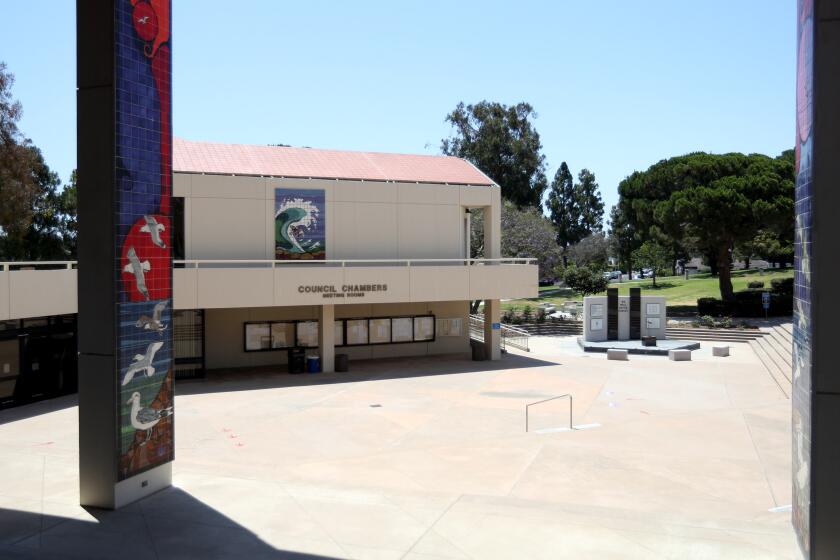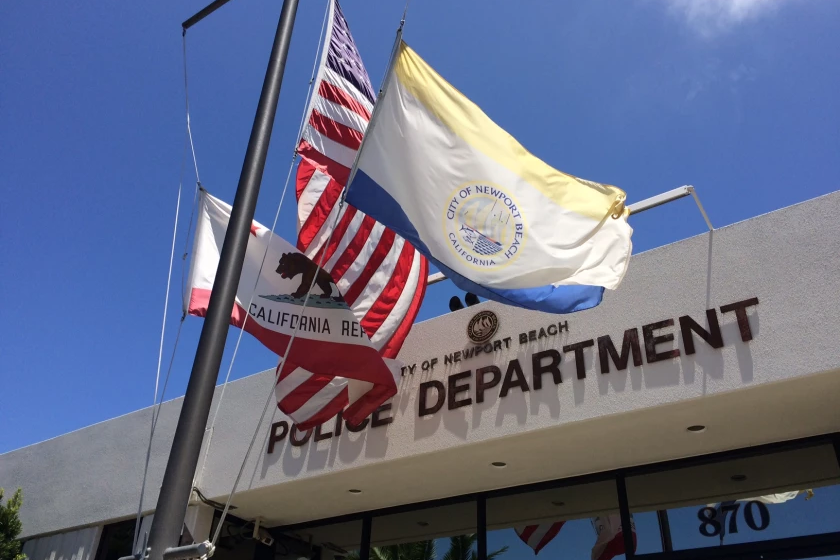New garden spreads its wings
- Share via
Butterflies fluttered by as Newport-Mesa residents gathered Sunday
for the grand opening of the butterfly garden at the Environmental
Nature Center.
The center, located behind Newport Harbor High School in Newport
Beach, is now home to the first educational butterfly garden in
Orange County and will contain plants and butterflies only native to
the area.
“That was the fun part,” said Nature Center grounds coordinator
Reginald Durant. “Not only finding what plants and butterflies are
available commercially, but which ones are native to Orange County.”
There are currently five species at the center: Red admirals,
Lorquin’s admirals, monarchs, painted ladies and mourningcloaks.
Eventually, there will be up to 12 different species flying around
the center’s butterfly garden, but different species emerge later in
the year.
“All the plants in the butterfly house are hosts or nectar
plants,” said Bo Glover, executive director of the center. Host
plants are where the eggs hatch into caterpillars, and nectar plants
are where the butterflies get their food, he explained.
Glover, who has been with the center for 14 years, said the garden
was modeled after a larger butterfly garden located in the Natural
History Museum of Los Angeles County.
“We’ve seen a lot of growth over the past few years,” he said.
“And this butterfly house is going to make us a destination for
people to come and learn from and appreciate nature. That’s our
mission -- to provide quality education through hands-on experience
with nature.”
The butterfly habitat was mainly funded by the Okazaki Rotary Club
and the Rotary Club of Newport-Balboa, as part of their centennial
project, with additional funding donated by The Home Depot and
Pacific Life Foundation. The cost of installing the garden was about
$35,000, and there are ongoing costs, such as purchasing new plants,
Glover said.
Judy Smith of Fullerton brought her granddaughter, 8-year-old
Nicole Hostert, to the butterfly house opening because she loves all
things nature.
“It’s magnificent; it’s wonderful,” Smith said. “And to think it’s
always going to be here.”
Durant, who did most of the research involved in getting the
garden started, as well as a lot of the gardening itself, spent the
day in the screened-off habitat, answering questions and educating
visitors.
“They’re kind of like you and I, when we first wake up in the
morning,” he explained to a woman who watched as a painted lady tried
to get its wings working, shortly after emerging from its chrysalis.
Butterflies go through a four-stage metamorphosis: they start off
as eggs that then hatch into caterpillars, which eventually attach
themselves to a twig and form a hard outer shell, called a chrysalis,
which is where the caterpillar turns into a butterfly.
Different species remain in their chrysalis’ for different lengths
of time, but they won’t emerge until they think the outside is
suitable, and some species can remain in there for several years,
Durant said.
The Environmental Nature Center is a nonprofit organization that
relies on memberships, gifts and grants to stay open. The center
offers many educational programs geared toward Orange County students
and residents to learn about nature in Southern California.
“It’s really our membership that is the backbone of the
organization and keeps us going,” Glover said.
For more information about the butterfly house or other programs,
contact the center at (949) 645-8489.
* LINDSAY SANDHAM is
the news assistant. She can
e reached at (714) 966-4625
or lindsay.sandham
@latimes.com.
All the latest on Orange County from Orange County.
Get our free TimesOC newsletter.
You may occasionally receive promotional content from the Daily Pilot.





